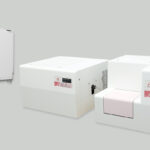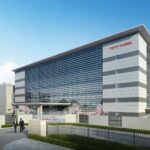ASIA ELECTRONICS INDUSTRYYOUR WINDOW TO SMART MANUFACTURING
Kioxia Raises Sustainability Drive in Two Japan Plants
Kioxia Group is increasing the usage of renewable energy by installing large-scale solar power generation systems. Accordingly, the move is the first for the company, particularly at its Kitakami Plant and Yokkaichi Plant, both in Japan. Installed on the rooftop of flash memory fabrication facilities, the new solar power systems will be the largest of their kind at any semiconductor plant in Japan.1
100% Renewable by 2040
With a total generating capacity of about 7.5 megawatts (MW), the new solar power systems are expected to generate about 7,600 megawatt hours (MWh) of electricity annually for Kioxia. Furthermore, this would mean the company reducing carbon dioxide emissions by about 3,200 tons per year.
In addition, Kioxia said the new solar power systems will accelerate efforts to address climate change. Hence, fulfilling one of the key objectives of the company’s management strategy.
The solar power generation system at Fab1 of Kioxia’s Kitakami Plant became operational recently. Meanwhile, the system at Fab6 of its Yokkaichi Plant will be operational this coming June.
Kioxia Group has set the goal of sourcing 100% of its energy from renewable sources by FY2040, including solar power. Most importantly, the company said it will continue to address climate change proactively and aim to develop sustainably for the benefit of society.
| Kitakami (Fab1) | Yokkaichi (Fab6) | |
| Power generation capacity | Approx. 3,600 kW | Approx. 3,900 kW |
| Estimated annual power generation | Approx. 3,500 MWh | Approx. 4,100 MWh |
| Annual CO₂ reduction | Approx. 1,600 tons | Approx. 1,600 tons |
| Operation start date | January 20, 2023 | Scheduled for June 2023 |
The systems will be operated and maintained under a Power Purchase Agreement (PPA) model.2
Climate Change Policy
KIOXIA Group treats initiatives addressing climate change as one of its most important management issues. Furthermore, it aims to reduce greenhouse gas emissions and energy consumption both in terms of our business activities and our product lifecycles.
Regarding greenhouse gas emissions, Kioxia said it has installed abatement equipment in 100 percent of our targeted facilities since 2011. This aims to eliminate the emission of PFCs*3 with high global warming potential during manufacturing.
Furthermore, Kioxia has set the goal of reducing by 1% each year the previous year’s total energy consumption based on a policy of reducing emissions through energy-saving activities in Japan in line with the Act on Rationalizing Energy Use.
Moreover, in FY2020 the company said it has formulated a long-term goal of ensuring that by FY2040, 100% of all its energy use will be from renewable sources.
“During product development, we strive to incorporate features that will improve the energy efficiency of our products when they are in use,” Kioxia said. In addition, it said, “We also make every attempt to reduce greenhouse gas emissions throughout our value chain, by ascertaining the volume of these emitted by our suppliers, and taking steps to help reduce those.”
Notes
1 Based on Kioxia research (as of February 1, 2023)
2 PPA operators own the solar power generation equipment and are responsible for installation and maintenance of the system; third parties that make the necessary space available (in this case Kioxia) purchase the electricity generated at the sites from the operators.
3 PFCs: Alternative to CFC gas used in manufacture of semiconductors. PFCs gas has high global warming potential.




